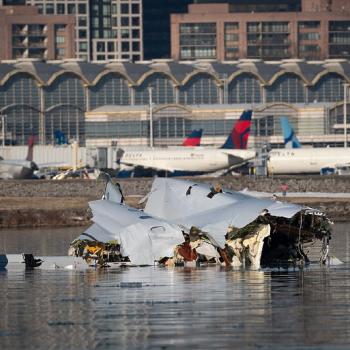All we have to do is send two mujaheddin to the furthest point east to raise a cloth on which is written al-Qaeda, in order to make the [U.S] generals race there to cause America to suffer human, economic and political losses...so we are continuing this policy of bleeding America to the point of bankruptcy.[x]
Boyd's theory helps us understand why this is so.
The OODA Loop
Successfully getting inside the enemy's mind is part of a complex, four-part process that became known as the Boyd Cycle or OODA Loop: observation, orientation, decision, and action. William Lind, a leading figure in the U.S. military reform movement of the 1970s, succinctly captured this cycle in his now-famous handbook on maneuver warfare:
Conflict can be seen as time-competitive observation-orientation-decision-action cycles. Each party to a conflict begins by observing. He observes himself, his physical surroundings and his enemy. On the basis of his observation, he orients, that is to say, he makes a mental image or "snapshot" of his situation. On the basis of this orientation, he makes a decision. He puts the decision into effect, i.e., he acts. Then, because he assumes his action has changed the situation, he observes again, and starts the process anew.[xi]
The process is a continuous one, involving constant feedback, adaptation, and adjustment to ground truth. This is not simply about peeping over the hill and scoping the physical terrain. This is about climbing cultural mountains. As Marine Col. Thomas Hammes writes in an earlier issue of the Marine Corps Gazette, "The OODA loop expands to track not just our enemy's reaction, but how the entire environment is reacting-the people, the host-nation government, our allies, our forces, even our own population."[xii] It is as relevant to diplomacy and domestic politics as it is to warfare. Indeed, one might go so far as to label it the empathetic "whole actor" successor to the rational actor model of decision making-a process instead of a model that provides a thoughtful way for dealing with the complexities of the times, many of which defy modeling (in contrast to a time when life was simpler, with its seemingly more straightforward balance-of-power calculations).
Boyd's thinking is a creative mix of ideas from physics, history, and his own experience of warfare both with enemies doing battle and those within the military bureaucracy. The first principle in facing an adversary is also the oldest: know your enemy and know yourself (and how you are perceived by the enemy). This falls within both observation and orientation. These steps also require recognizing the potential for mismatch between an observation and a description of that observation, which arises from the observer's own mental processes. If not self-aware, the observer will naturally describe his observations through the lens of his own internal dogmas and preconceived notions, which are prone to be out of synch with an unfolding, constantly changing outside world.[xiii]
To know the enemy (or a friend) requires knowing one's own prejudices and blind spots. Boyd had studied engineering. From physics, he was familiar with the Heisenberg Uncertainty Principal, which states that the process of observation changes the object being observed. In the world of human activity, and foreign policy in particular, it is a problem that comes from bringing prefabricated truths and Eurocentric biases to our perceptions of other cultures and individual motives. How do we avoid a mismatch between the observation and the description of that which we are observing? Otherwise put, how do we break through our mere perception of a situation to grasp its reality?
Boyd's second principle was learned from fighting bureaucratic wars: always use your enemy's own information. As long as we dismiss our enemies as fanatics, wackos, or cowardly barbarians, we will never know them. These default labels for the unthinking will prevent us from ever making the critical distinctions that can help us "disaggregate" our adversaries.
Observation and Orientation
One, possibly very big, part of the observation and orientation problem that American policymakers have with "radical Islam" stems from having too narrow an aperture for viewing unfolding world events. This has produced an unhealthy obsession with "the Islamic threat" - an obsession that enhances the prestige of those we fear, making the "threat" greater and more threatening than it is. As this mismatch between our mental images and objective reality increases, so does confusion, uncertainty and disorder. The only alternative to this dialectic of misperception is to rebuild one's mental image.[xiv]
The knowledge that Americans who are engaged with the Muslim world (whether as ally or adversary) need most to acquire is found in the Qur'an. Quite simply, it is the Muslims' guide for living, their constitution for both personal and community behavior in service to God. In essence, the Qur'anis for Muslims a cross between Saint Benedict's Rule[xv] and the U.S. Constitution. Like our own Constitution, the Qur'anis subject to different interpretations by scholars of the law. Parts of it are ambiguous. What is the context of the different proclamations and ordinances? Should it be modernized and updated, or should it be interpreted in light of original intent? How does one determine original intent?




